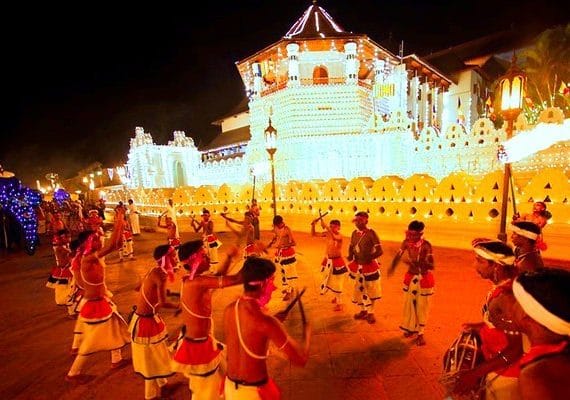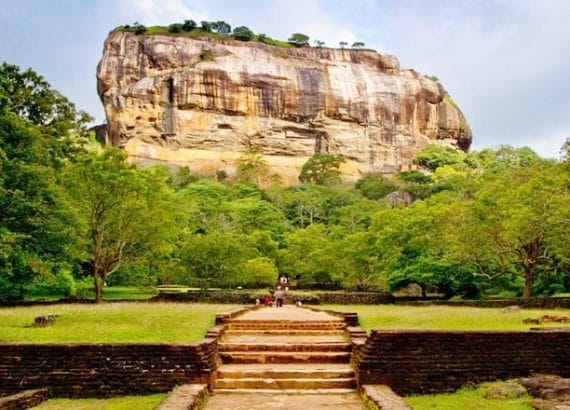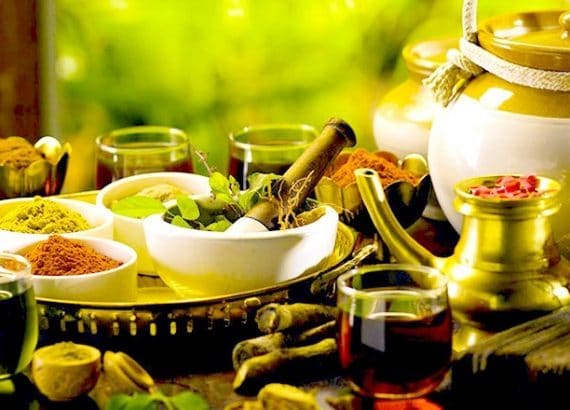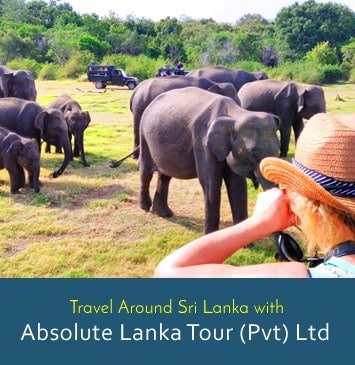List of National Museums in Sri Lanka
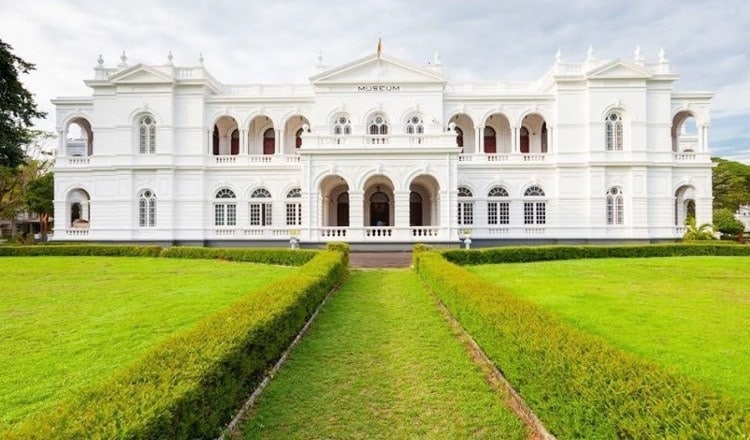
List of National Museums in Sri Lanka
Museums in Sri Lanka offer a rich insight in to the history and evolution of Sri Lanka as one of the most distinctive countries in the world. As in any other place in the world, one gets to know all about the past of a country through the exhibits housed in the museums. In a way museums are place to get enlightened about a country’s heritage. Speaking of heritage, Sri Lanka undoubtedly has several areas of tourist attractions. National Museums in Sri Lanka
The museums in the country are dedicated to different themes, or rather the exhibits displayed make us delve deeper in to the relation of sea and the country or the life and times of a past prime minister or the significance of the archaeological findings. All the museums in Sri Lanka are for the common man, the curious tourist or the serious student of that particular discipline.
Colombo National Museum
The Colombo Museum as it was called at the beginning was established on 1st January 1877. It founder was Sir William Henry Gregory, the British Governor of Ceylon (Sri Lanka) at the time. The Royal Asiatic Society (CB) was instrumental in bringing to the notice of Gregory on his appointment as Governor in 1872 the need for a public museum with much difficulty the approval of the legislative council was obtained within a year. The Architect of the Public Works Department, J.G. Smither was able to prepare the plans for new structure on Italian architectural style. The construction was completed in 1876 and the Museum commenced it functions in the following year. The Authorities of the museum took various steps to display the cultural and natural heritage of the country for this purpose. With the development of the museum to international level, it earned the status of a national museum during the period of Dr. P. E. P. Deraniyagala. He was able to open up branch museums in Jaffna, Kandy and Ratnapura and a full – fledged Department of National Museums was established in 1942 under the act No. 31. The extension of the number of branch museums has now increased to nine and in addition a school science programme and a mobile museum service are also in operation. This process has further been improved by the arrangement of the galleries of the ground floor in a historical sequence and those of the upper galleries on a thematic basis. It is the oldest and largest Museum in the country, established in 1877. Housed in a fine colonial-era building, the museum is famous for collection of ancient royal regalia, Sinhalese, antique furniture, china, and Ola manuscripts. The museum contains: more than 4.000 palm leaf manuscripts; ancient and medieval jewelry; rare collection of traditional masks; wood and ivory carvings; temple frescoes; ceramics objects including VOC plates of the Dutch period; stone sculpture and lithic inscriptions.
National Museum of Natural History
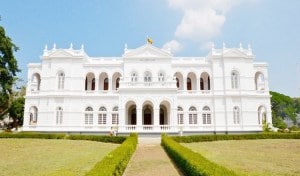
It is located in the same premises as the National Museum. National Museum of Natural History which reflects the Natural heritage was established on 23rd of September 1986. This museum is situated same premises of Colombo National Museum facing Ananda Coomaraswamy Mawatha, Colombo 07. Even though there is considerable number of museums in Sri Lanka, this is the only one representing solely the Natural Heritage. The special feature is that plants and Animal specimens which are endemic to Sri Lanka, rare and threatened with extinction are displayed in this museum. There is a large collection of specimens such as Mammals, Birds, Reptiles, Insects, Fish, Amphibians of various kinds of Plants and Geological Rocks. Leopard of Punani can be introduced as a special specimens displayed in the Natural science Museum. This leopard which was caught at Punani in Batticaloa District on 16th August 1924 had killed about 13 people. The Skull of Megacerus giganteus (elk) which huge horns which is displayed at the Geological section of the museum is a specimens that creates curiosity among the visitors. This skull which belonged to an extinct species of stag was gifted by Lord Enniskillen in 1950.
Galle National Museum
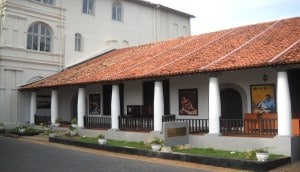
The Galle National Museum is established in the oldest Dutch building of the Galle fort, constructed in 1656. To aware the public on traditional cultural heritage of Southern Sri Lanka, the Department of National Museums developed this museum and opened to the public on 31st March 1986. Galle National Museum displays a wide range of archaeological and anthropological objects inherited in Southern region. Collection of traditional masks used in various rituals, collection of ornamental objects made up of turtle shells, ancient wooden carvings and a Beeralu collection are important visitor attractive exhibits in the museum. The influence of Dutch is depicted by the equipment’s used in Dutch ships came to the Galle harbor. The Galle National Museum plays an important role as a centre of education in the Southern region. The museum is housed in an Old Dutch building in the historic fort of Galle. It has on display objects connected with marine biology and botany and also some beautiful diagrams showing local fishing methods, natural coral beds, sea grass beds and deep sea fishes.
Dutch Period Museum Colombo
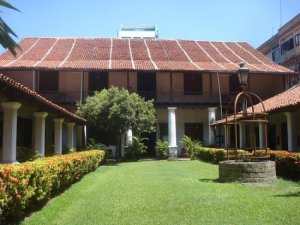
There are numerous exhibits from Dutch colonial times such as ceramics, coins, paintings and military equipment that were used in the invasion of Lanka. The museum has maintained the features of a colonial Dutch town house and would be of great interest to architecture enthusiasts. This two storied large building reflecting the features of a 17th century Dutch Urban house was built by Thomas Van Rhee, The Dutch Governor of Sri Lanka from 1692- 1697 as his official residence. During the British period in 1796 this building was used as an arms store of army hospital, police training center, Pettah post office and telecommunication center. This building was preserved by a special preservation committee with the assistance of Netherlands government in 1977 and opened for the public as Dutch museum by the Department of National Museums. It has displayed over 3000 museum objects related to the Dutch who ruled coastal areas of Sri Lanka. The garden still has the original stone wall of the house as well as a grave yard full of Dutch explorers and traders. The museum is housed in the old ‘Dutch House’ on Prince Street, Pettah, which was earlier the residence of Count August Carl Van Ranzow.
National Museum Kandy
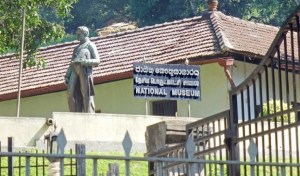 This museum has over 5000 museum objects which are depicting various aspects historical and cultural events of the Kandyan period. (17-19 century A.D.). This building established during Sri Wickrama Rajasingha era was then known as “Palle Vahala” This was used as the palace where the Queens of the king lived. This building has been built according to the architectural features of Kandy period. This pallevahala building was used to deposit the various items of historical value made by Kandy Art Association established in 1832 and technicians of Matale district. This was opened for the public as a museum in 1942. Situated behind the Temple of the Tooth, in a building of historical and architectural interest.
This museum has over 5000 museum objects which are depicting various aspects historical and cultural events of the Kandyan period. (17-19 century A.D.). This building established during Sri Wickrama Rajasingha era was then known as “Palle Vahala” This was used as the palace where the Queens of the king lived. This building has been built according to the architectural features of Kandy period. This pallevahala building was used to deposit the various items of historical value made by Kandy Art Association established in 1832 and technicians of Matale district. This was opened for the public as a museum in 1942. Situated behind the Temple of the Tooth, in a building of historical and architectural interest.
National Museum Ratnapura
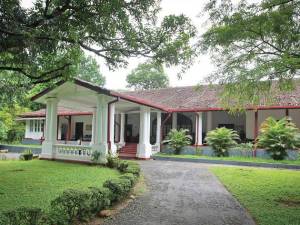
The beautiful building known as “Ehelepola Walauva” located at Ratnapura – Colombo road was opened for the public as a museum on 13th May 1988. It has exhibition rooms which contain prehistoric archaeological inventions, natural heritage, geological, anthropological, zoological artefacts and models related to the Sabaragamuva Province. Ratnapura is famed for being the home of the Lankan gem trade and has several private museums dedicated to the industry, where you can purchase precious stones. Things to see the museum exhibits a collection of pre-historic fossils of elephants, rhinoceroses & hippopotamuses found in gem pits from the Balangoda area. Also displayed are stuffed animals & snakes in jars. There are numerous items of local art & culture such as musical instruments, masks, textiles, flags and fabrics. The thriving Gem and Jewelry industries are represented and examples of stunning jewelry, both historical and contemporary can be viewed to whet your appetite for what awaits outside the building. There also artifacts chartering the history of the Sabaragamuwa Province, the province in which the town lies.
Maritime Museum Galle
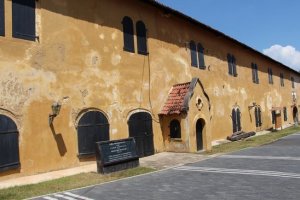 Maritime Museum is the only museum which aware the public on marine biological and anthropological aspects of Southern coastal area. It is located in the Old Dutch ware house of the fort of Galle, built in 1671. The museum was open to the public on 9th May 1992. Aftermath of Tsunami on 26th December 2004, the museum was completely destroyed and all the expositions were damaged. Under Sri Lanka – Netherlands Cultural Co-operation Program, the Royal Government of Netherlands provided financial assistance for reconstruction of the Maritime Museum. After 3 years period of reconstruction, now the Maritime Museum has opened to the public. The first gallery depicts the types of watercraft used in passenger transport and maritime trading in Southern Sri Lanka. The traditional life style of fishing communities and such fishing techniques are displayed with attractive models and replicas. The second Gallery is focused on marine Eco systems and their flora and fauna. Models of mangroves, sea shore plants, turtles, sea birds and marine mammals are displayed with their taxonomic details. Specimens of corals, marine shells and some invertebrates can be observed in the exhibition while a large skeleton of a Whale mounted in the roof giving you a wonderful experience. The Maritime Museum is serving as a center of education for various groups of visitors and researchers of Southern region.
Maritime Museum is the only museum which aware the public on marine biological and anthropological aspects of Southern coastal area. It is located in the Old Dutch ware house of the fort of Galle, built in 1671. The museum was open to the public on 9th May 1992. Aftermath of Tsunami on 26th December 2004, the museum was completely destroyed and all the expositions were damaged. Under Sri Lanka – Netherlands Cultural Co-operation Program, the Royal Government of Netherlands provided financial assistance for reconstruction of the Maritime Museum. After 3 years period of reconstruction, now the Maritime Museum has opened to the public. The first gallery depicts the types of watercraft used in passenger transport and maritime trading in Southern Sri Lanka. The traditional life style of fishing communities and such fishing techniques are displayed with attractive models and replicas. The second Gallery is focused on marine Eco systems and their flora and fauna. Models of mangroves, sea shore plants, turtles, sea birds and marine mammals are displayed with their taxonomic details. Specimens of corals, marine shells and some invertebrates can be observed in the exhibition while a large skeleton of a Whale mounted in the roof giving you a wonderful experience. The Maritime Museum is serving as a center of education for various groups of visitors and researchers of Southern region.
Anuradhapura Folk Museum
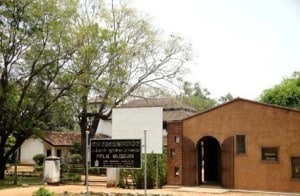
Anuradhapura Folk Museum was established in 22nd August 1971 as a provincial Museum under the Department of National Museums. The aim of this museum is to collect, conserve and exhibit the cultural and religious objects used by the folk community in Nuwara-Kalaviya area. In 12-13 A.D. the kingdom was shifted to the South-west because of the foreign invasions. Several families remained and they lived in a little hamlets surrounded by the thick forest. They were unable to communicate with the outer world and had to product all the things needed in their day- today life. The objects they used in daily life illustrate their traditional knowledge. Anuradhapura Folk Museum has a good collection of traditional objects used by the folk community in Nuwara Kalaviya.
Independence Memorial Museum
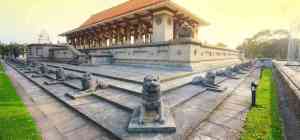
From the beginning of Sri Lankan civilization till the present times for about 25 centuries, the service rendered by the Sri Lankan’s to uplift and sustain their political, economic, social, cultural and human freedom is immense. The challenges they bravely faced on such occasions provide an example and a pride to future generation. The aims and objectives of this exhibition constitute the rekindling of our pride and reminding of the great efforts taken over the centuries until 1972 when we regained in gain independence, by our national heroes and their bio-sketches, for the benefit of the future generations.
Magampura Ruhunu Heritage Museum
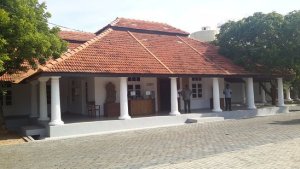
This museum which belongs to the department of National Museums establish in a special historic building where situated in “Magama” Kingdome. It was situated south from River Mahaweli and South from River Benthara and also limited south and west shores. It limits in north, goes up to Trincomalee, in the middle up to Kandy, in west up to Bentota and ended with south and west shores. Magampura was a Kingdome of Magampura which built by prince ‘Mahanama’ a brother of Dewanapathis who came from Anuradhapura. Evidence have been founded regarding this city was modern city of Thissamaharamaya. This museum was established in the ancient building complex of kachcheri in Kingdome Magampura currently named Hambanthota. British administrator Leonard Woolf (1880-1969) who was the Assistant Government Agent of Hambanthota District. The Building in which the Magampura Ruhunu Heritage Museum is established represent the secretariat of Leonard Woolf. Later his predecessors were used this old kachcheri building as it is. This museum reflects culture and natural heritage in the region of Ruhuna. The collection of artifacts and models, pictures, paintings reflects pre-historic, historic, art and archaeology situation in southern Lanka. And there is a collection of information about the European activities and changes happen in down south. As well as after independence , until the present time a large number of pioneers of divers, disciplines such as social, political, scientific and artistic facets existed in the Rohanapura. The portrait busts of pioneers in modern Rohanapura are in this museum. This museum can be used as a research center from a school child to the highest level of scholars. The very special feature of this museum is, it is using modern technology for sensors to reduce expenditure, videos, able to access into information through mobile phone apps/soft wears and also free Wi-Fi for the public and could be consider this as a modern museum.
Ceylon Tea Museum
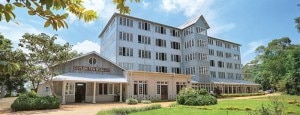
Ceylon Tea Museum situated in Hantana, Kandy is a project jointly operated by Sri Lanka Tea Board and Tea Industry Stakeholders. The main objectives of setting up of the Tea Museum are to exhibit memorabilia machinery, documents, pictures and object of historical value to the Sri Lankan tea industry and to exploit the tourism potential of the tea industry. Tea is Sri Lanka’s main agricultural export commodity and Sri Lanka is the second largest exporter of tea in the world. The story of the tea industry is a valuable part of our history that we are committed to preserve. Ceylon Tea Museum is one of best Museums of its kind in the world and visitors would be pleased to see more than 100 years old tea machinery & object displayed. The ground surrounding the Museum is landscaped with different varieties of tea as well. The panoramic view of Kandy town, Knuckles range and Matale range of hills can be viewed through a telescope mounted on the fourth floor of the Museum. Built in 1925, the spacious four storied Hantane Tea Factory, had been abandoned for more than a decade when it was earmarked for the Museum Project undertaken by the Sri Lanka Tea Board and the Planters’ Association of Ceylon. Today it stands as a proud monument to the success story that is Ceylon Tea. The Hantane tea factory is located three miles from Kandy. It is served by a motor able road that circles the factory providing easy access. Kandy is a mandatory stop on virtually every tourist itinerary, and the location of Ceylon Tea Museum at Hantane makes sound economic sense. It will also enhance the attraction of hill country to visitors. The factory building consists of four floors. The ground accommodate heavy machinery; the first floor occupies some examples in the withering process. Library and the Audio-visual presentations in the second floor whilst the sales outlets are found in the third floor. The fourth floor is to be converted to a deluxe restaurant. Although exhibits are not abundant they do provide a valuable insight into how tea was manufactured in the early days. Old machinery, some dating back more than a century, has been lovingly restored to working order. The first exhibit that greets visitors in the Engine Room on the ground floor of the museum is the Ruston and Hornsby developed diesel and other liquid fuel engines, power for the estates were obtained by water driven turbines.
Koggala Folk Museum
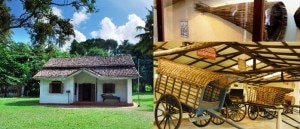
Koggala Folk Museum presents a rare collection of folk implements and appliances from different parts of the island. The items are arranged under twenty five different categories representing handicrafts, folk art and music, cottage industries, agriculture, folk medicine, costumes, religion etc. This museum erected as a tribute to Martin Wickramasinghe, the doyen of Sinhala writers is Ginpathaliya in Kggala, the birthplace of the late writer that had once been the playing field of young Wickramasinghe.

